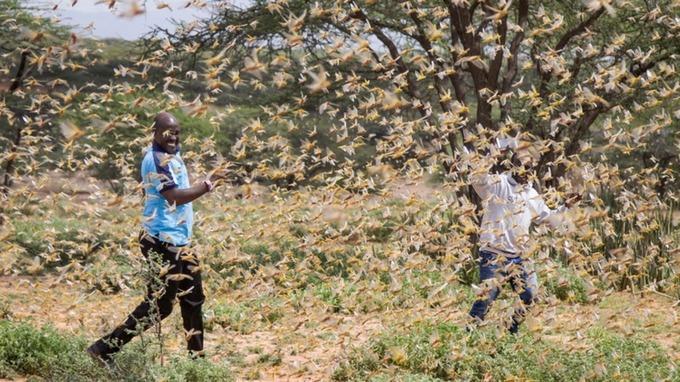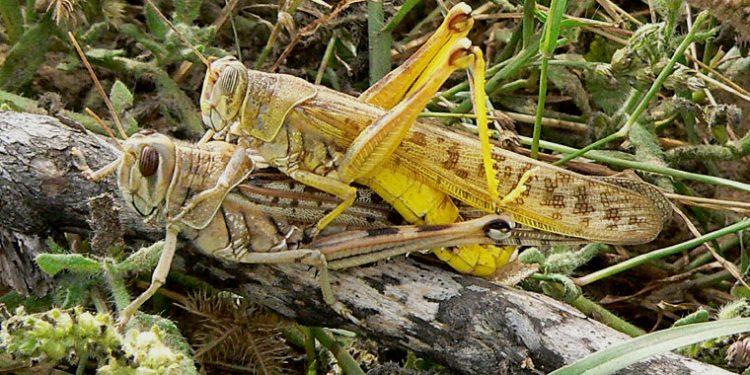African Locust Outbreak Returns; Second Wave Approximately 20 Times Larger from Zero Hedge
Shortly before Coronavirus began sweeping the globe, the largest locust plague in 70 years was sweeping through various countries in Africa.
According to the Associated Press, they’re back – with a second wave of the destructive, crop-eating insects up to 20x as large as the first which are swarming by the billions.
The young desert locusts have left their breeding grounds in Somalia, where they will search and destroy fresh vegetation resulting from seasonal rains. This in turn has caused locals to band together to try and combat them, only to risk spreading coronavirus, according to the report.
t is the locusts that “everyone is talking about,” said Yoweri Aboket, a farmer in Uganda. “Once they land in your garden they do total destruction. Some people will even tell you that the locusts are more destructive than the coronavirus. There are even some who don’t believe that the virus will reach here.”
Some farmers in Abokat’s village near the Kenyan border bang metal pans, whistle or throw stones to try to drive the locusts away. But mostly they watch in frustration, largely barred by a coronavirus lockdown from gathering outside their homes.
A failed garden of cassava, a local staple, means hunger. Such worries in the village of some 600 people are reflected across a large part of East Africa, including Kenya, Ethiopia and South Sudan. The locust swarms also have been sighted in Djibouti, Eritrea, Tanzania and Congo. –AP
According to the UN Food and Agriculture Organization (FAO), the locust outbreak represents “an unprecedented threat” to the food supply and livelihoods, while officials claim that the new wave is approximately twenty times larger than the one from just months ago.
“The current situation in East Africa remains extremely alarming as … an increasing number of new swarms are forming in Kenya, southern Ethiopia and Somalia,” reads an assessment by the FAO.
Meanwhile, a third round of locusts is expected in late June and July – coinciding with the beginning of harvest season, according to the organization – which has asked for $153 million in aid, up from $76 million. So far the FAO has gathered $11 million in cash or pledges despite what they say is a need for urgent action before more rainfall causes locust numbers to explode once again.






